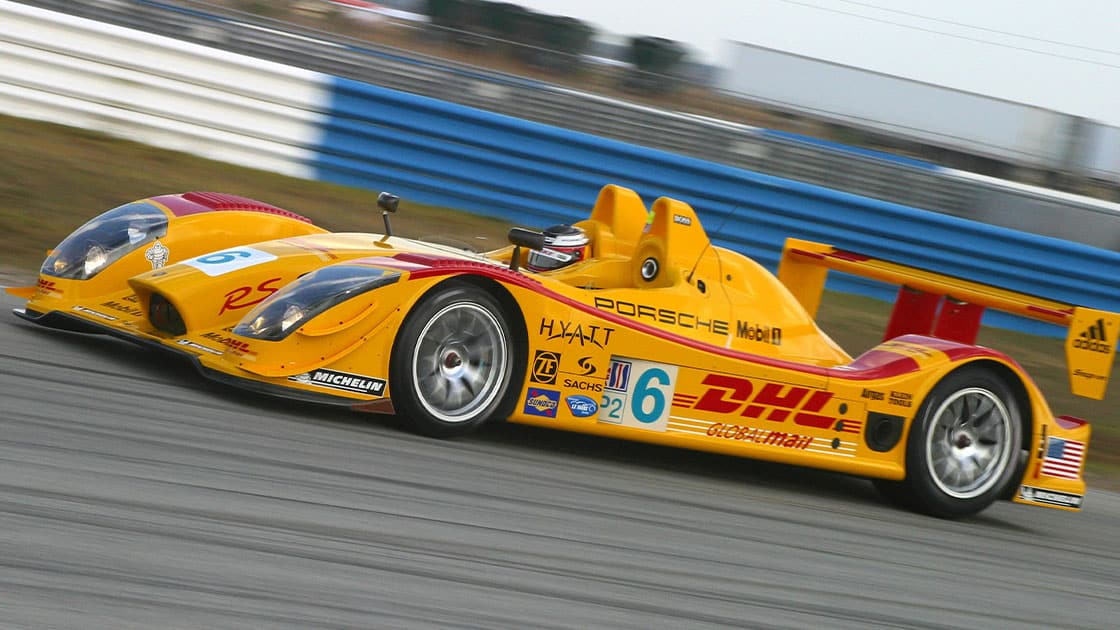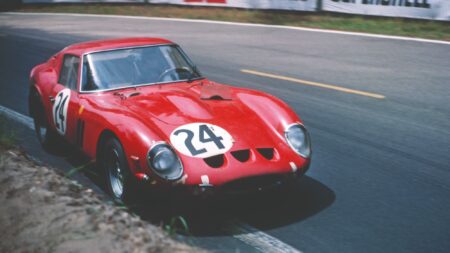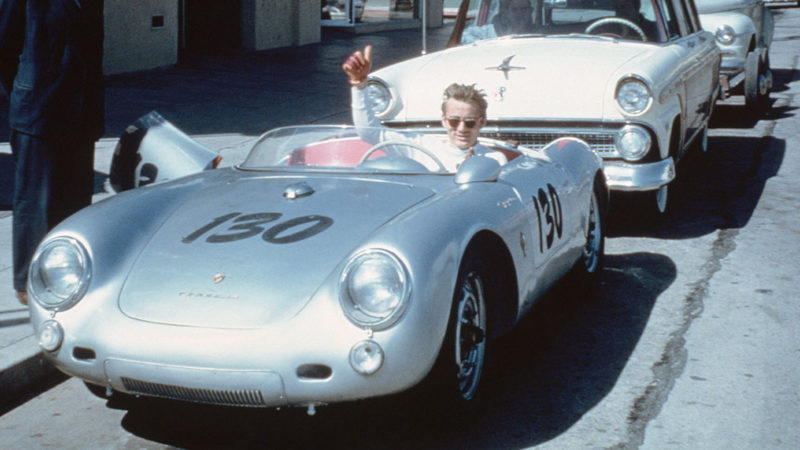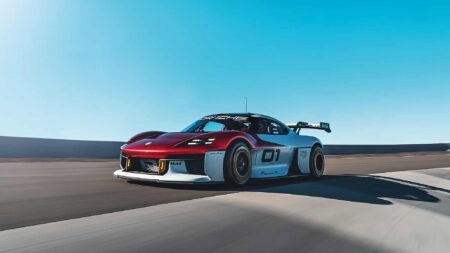The motor fires quickly and loudly. It displaces just 3397cc and is forced to breathe through 44mm restrictors, but somehow the alchemists in the engine shop have squeezed from it 503bhp at 10,300rpm and 273lb ft at 7500rpm. So, as Roland Kussmaul, a man with a direct link to every post-956 racing Porsche, asks me not to bin it, it’s time to consider three simple facts: 503bhp, 775kg, cold slicks.
The car’s aggressive appearance and disjointed boarding procedure has prepared you for the worst, but an unexpectedly friendly character is confirmed within 100 yards of pulling away: it’s easy to drive. A simple foot clutch gets you moving, after which the Spyder becomes a strictly two-pedal, two-paddle device. Flick the right paddle to shift up, the left to shift down. It sounds simple. And that’s before you suss the uncanny accuracy with which the electronic systems blend the changes. Like any race transmission, it likes to work under maximum duress, and there’s significant slip from the cold rubber, but even so I have never driven a car that assists its driver so comprehensively.
The traction control system has many different maps for changing weather conditions and is understandably set to ‘full wally’ for my purposes, allowing me to lean on the rear axle from cold (although the car will still spin with the traction control on, apparently) and marvel at this six-speed transmission. Flat shifts from second to third send only the faintest flutter through the body. Remarkably, it’s even smoother coming back down the ’box. From 140mph in fifth, the driver simply flicks the left paddle, then waits the few milliseconds it takes for the black box to assimilate the difference between crank and cog speeds and apportion the precise number of revs to bridge that gap. This process is seamless, making a mockery of jerky road-going equivalents.
And the brakes – 380mm front and 355mm rear carbon discs – are mind-blowing. With some tyre temperature, it’s now possible to carry more corner speed and thump down the straights. Acceleration is strong up to about 140mph, but then begins to tail off because the Spyder runs more wing than a Fokker Triplane. Lift off the throttle at 155mph and it decelerates like a modern road car using half its braking performance. This means that the Spyder’s initial retardation is aerodynamically assisted, that you can punch the middle pedal as hard as you dare, bracing yourself in the belts as the car pulls 3g. But as speed is shed, so is aero effect, and this means that, just at the point your brain tells you to push a touch harder on the pedal, actually you must reduce pressure in preparation for mechanical grip’s takeover. It’s a strange feeling, but becomes instinctive fairly quickly.
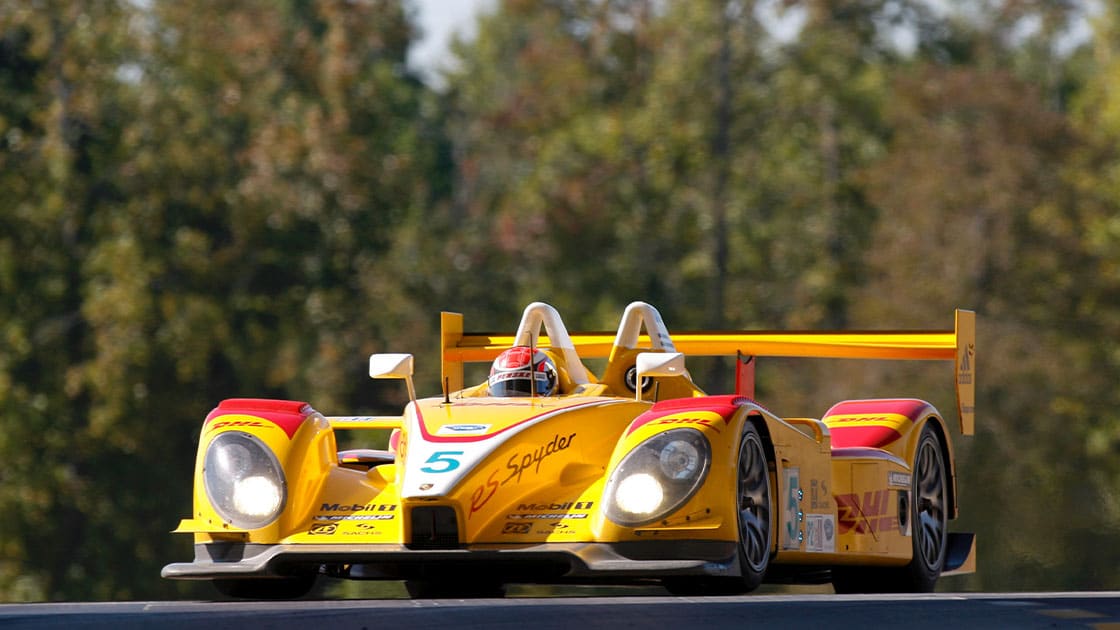
The car’s agility, though, is more difficult to comprehend. Weissach is a technical circuit shrouded in concrete obstacles, yet the Spyder slices at 100mph through turns which a GT3 RS couldn’t manage at 65mph. The final banked right-hander generates in the region of 2.5 lateral g, and after 10 laps my neck is throbbing. Modern racing drivers need to be incredibly fit.
Given the vigour with which it spun its V8 into life, you could assume that the new Spyder’s starter motor is as powerful as the 550’s engine. The air-cooled flat-four has been warming for a few minutes, but I lean in and switch it off. Whereas I was desperate to jump in and drive the other, I want to walk around the 550, absorb its shape and details. Only time will tell if future generations will stalk around surviving RS Spyders 50 years from now and coo with delight – but I doubt it.
